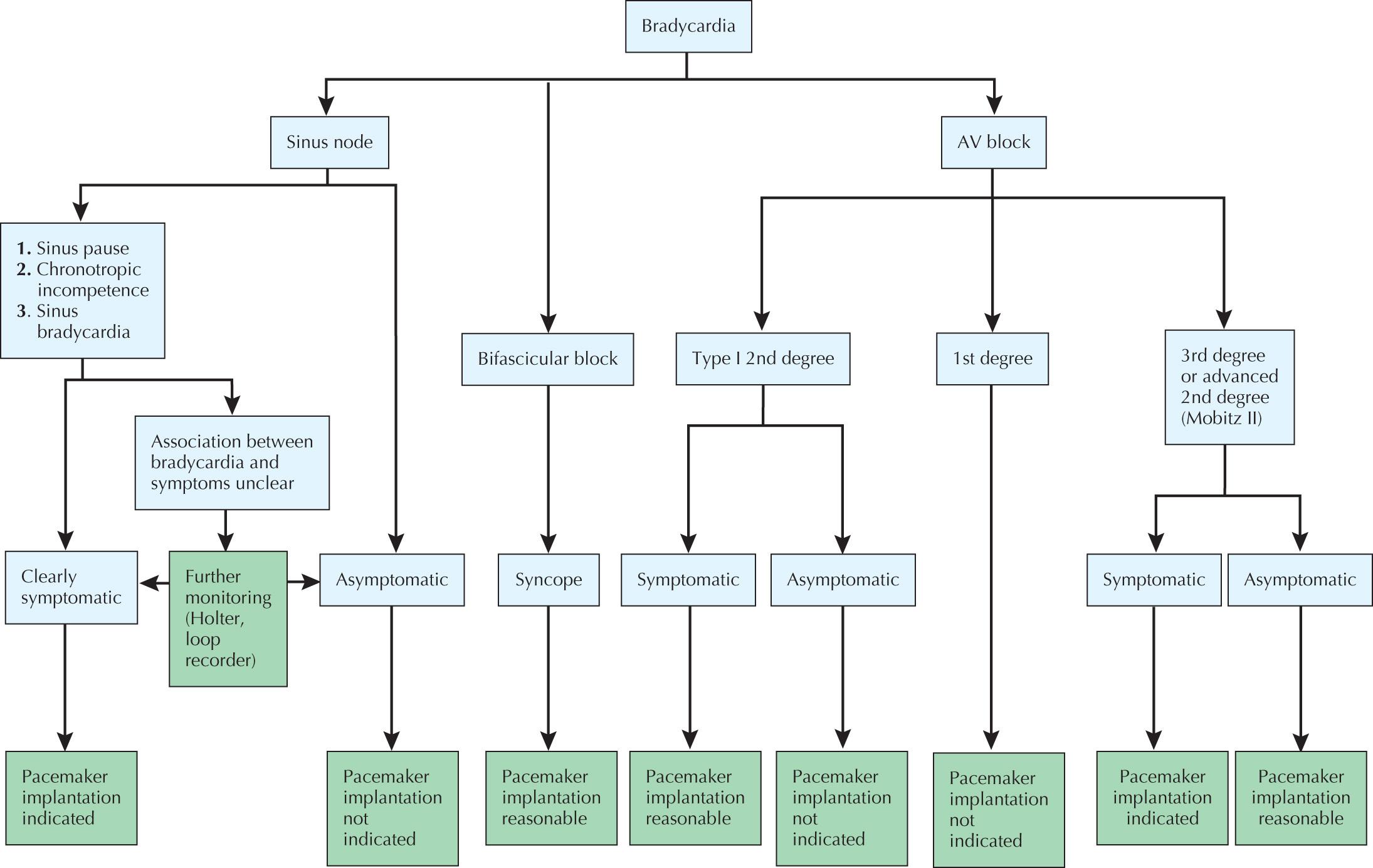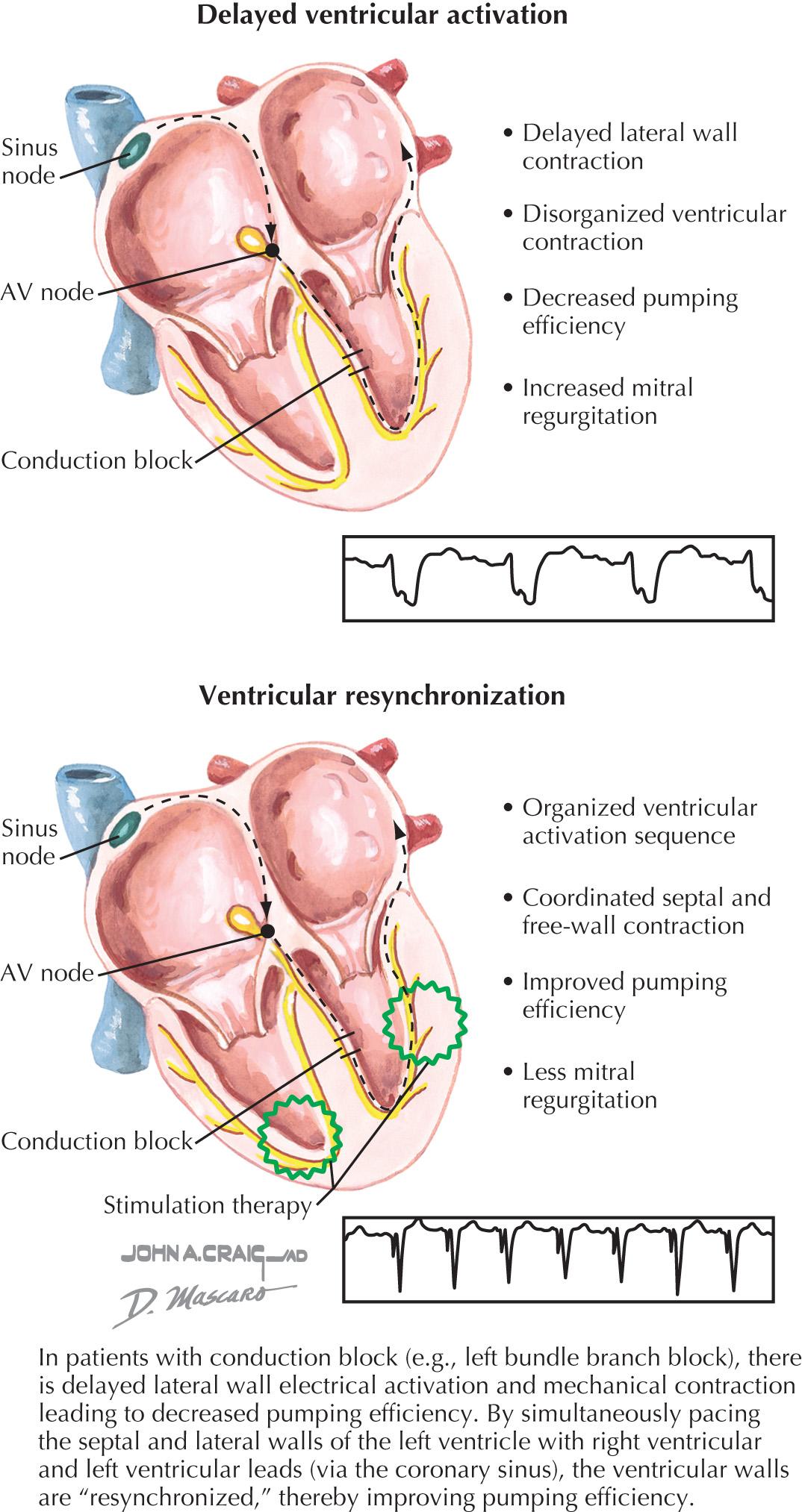Physical Address
304 North Cardinal St.
Dorchester Center, MA 02124
Technological advances have improved the versatility and function of implantable devices used to treat bradyarrhythmias and tachyarrhythmias. Surgical placement of pacemakers and implantable cardioverter-defibrillators (ICDs) can be performed on an outpatient basis, with low risk and minimal morbidity, which allows most patients to return to full functional capacity quickly.
Pacemakers are indicated primarily for patients with symptomatic bradycardia or impressive bradycardia without symptom correlation but which is associated with a high risk of progression to a symptomatic bradycardia. Precise indications are published in the American College of Cardiology/American Heart Association Guidelines for Pacemaker and ICD Implantation. Symptoms of bradycardia may be subtle (lightheadedness, fatigue) or dramatic (syncope or cardiac arrest). Bradycardia may be the result of dysfunction of the sinus node (referred to as sick sinus syndrome), the atrioventricular node, or the infranodal conduction system. Damage to the conduction system results most commonly from fibrosis or infarction, but may be the result of numerous other etiologies, including infection, pharmacological agents, electrolyte imbalance, or thyroid disease. It is imperative to rule out potentially reversible causes before committing a patient to device-based therapy ( Fig. 44.1 ).

Based on the concept that “dyssynchronous” electrical activation of the left ventricle—as with bundle branch block or right ventricular pacing—translates to inefficient cardiac function, biventricular pacing has been developed as a therapeutic approach for patients with impaired cardiac function who would not otherwise have an indication for pacemaker therapy ( Fig. 44.2 ). For instance, in patients with left bundle branch block, delayed electrical activation of the lateral wall of the left ventricle leads to delayed contraction of this same wall. In an individual with normal systolic function, delayed contraction of the lateral wall of the left ventricle may not result in any significant decrement in function. However, in an individual with markedly impaired left ventricular function, the disorganized ventricular contraction resulting from left bundle branch block can result in decreased pumping efficiency and increased mitral regurgitation. By positioning pacemaker leads in the right ventricle and in a lateral branch of the coronary sinus on the epicardium of the left ventricle, simultaneous pacing of both walls of the left ventricle improves ventricular synchrony. Biventricular pacing is indicated for treatment of patients with symptomatic heart failure (New York Heart Association functional class III or IV) despite optimal medical therapy, reduced left ventricular ejection fraction, and a widened QRS duration (either intrinsically or due to a long-term need for pacing).

Become a Clinical Tree membership for Full access and enjoy Unlimited articles
If you are a member. Log in here